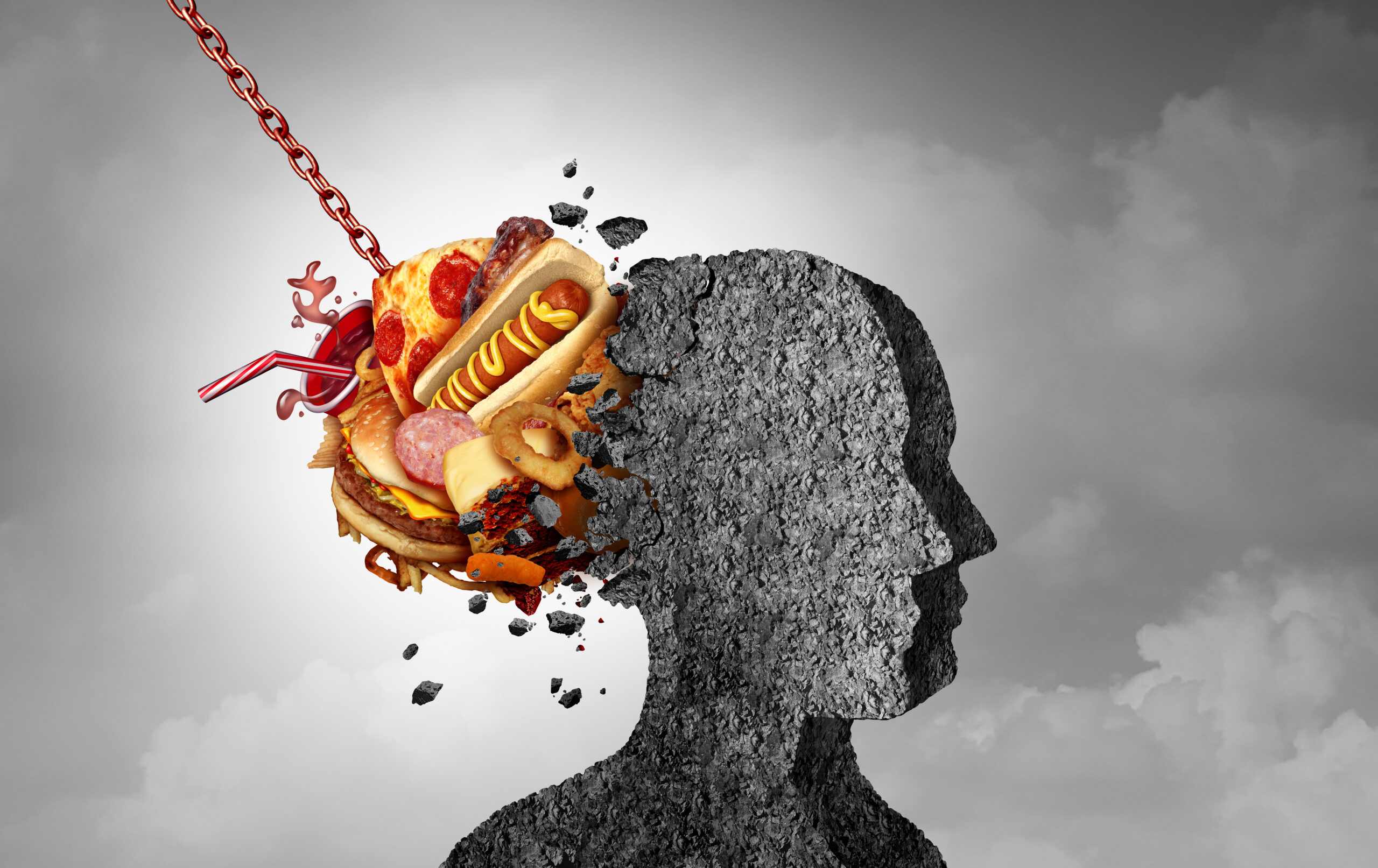On the surface, food cravings are fairly straightforward. A craving happens and a food is typically consumed. When brain chemistry and nutrition are balanced, a food craving can be healthy, signaling to the body that it’s time to refuel. Dig a little deeper and you’ll find that food cravings can sometimes be powerful indicators of biochemical dysregulation in the brain and body. When body systems become imbalanced, cravings can become uncontrolled, leading to weight gain and poor health outcomes. Understanding the complexity of the brain, along with the impact of food and lifestyle choices, is fundamental for managing food cravings.
In order to know why food cravings occur, it’s important to dive into hunger and satiety signaling in the brain. The hypothalamus is the region of the brain in charge of secreting hormones that modulate hunger and emotions (pleasure/pain). Leptin and ghrelin are the hormones responsible for regulating hunger and satiety cues in the hypothalamus. Leptin signals satiety after an adequate amount of food is consumed. Conversely, ghrelin signals hunger, letting the brain know it’s time to eat. The inverse relationship between the two maintains a natural eating window (roughly every four hours) meant to nourish the body adequately without overfeeding. Disturbances to this cycle can initiate cravings.
Dopamine, a neurotransmitter, is one of the primary disruptors of leptin and ghrelin. Dopamine is released in the brain, in response to food (or other stimuli), producing feelings of pleasure and satisfaction. Some time ago, food manufacturers realized if food could create a dopamine response, people would eat more of their foods. Since this revelation, foods have been engineered to taste good, almost always at the expense of providing nutrients. These heavily processed foods are typically made with excess amounts of sugar, fat, and/or salt to provoke a pleasurable experience (surge of dopamine), hooking the brain into wanting more food.2 As dopamine increases, satiety (leptin) decreases, triggering hunger (ghrelin) and a desire for more dopamine. Ultimately, this encourages a cycle that requires the consumption of more unhealthy food. Over time, the continual release of dopamine can desensitize leptin, creating constant urges to eat unhealthy foods.3
Although unhealthy food choices are a primary driver of cravings, the body can experience cravings from a number of other factors. These factors include hormonal fluctuations, nutritional deficiencies, sleep deprivation, stress, and emotional dysregulation. For instance, just before a woman’s menstrual cycle the hormonal fluctuation of estrogen and progesterone can contribute to cravings for high carbohydrate and sweet foods. Nutritional deficiencies may also cause specific cravings. Low magnesium levels can trigger chocolate cravings, or a hankering for red meat might indicate a need for iron. People may also turn to food when emotional, stressed, bored, depressed or tired. Being able to pinpoint why the unwanted craving is occurring is the key to understanding it. Once the source has been identified, actively managing diet, sleep, stress and exercise are the most powerful tools for overcoming and preventing unwanted food cravings.
So what can be done to manage food cravings?
- Attention to macronutrient content in food is essential for fending off cravings. For example, eating a balance of protein, healthy fats, and carbohydrates at every meal and snack.
- Eat a healthy breakfast in order to lay the nutritional foundation for a well-nourished day.
- Consume adequate protein (approximately 70-100 grams/day) and fiber (30 grams/day) to maintain blood sugar levels, provide energy, supply nutrients, encourage healthy bowel movements and maintain fullness for longer.
- Carbohydrate consumption should consist of fruits, vegetables, and whole grains, while consciously resisting sugary, salty, fattening foods or processed foods.
- Listen to the natural hunger cues the body is sending. If leptin and ghrelin are balanced and working together, hunger is typically triggered every 4 hours.
- Notice urges to eat sooner or longer than every 4 hours. This can indicate a dysregulation in brain chemistry and a need to hone nutritional balance, meal timing, stress response, or sleep.
Food cravings are complex and when unchecked can potentially lead to poor health outcomes. Chronic consumption of highly processed foods can disrupt dopamine signaling and decrease sensitivity to satiety, in turn altering the brain reward center causing food cravings. Additionally, lifestyle factors, nutritional deficiencies, and emotional dysregulation can cause desires to eat certain foods at certain times.
Think of food as fuel. Every eating window is an opportunity to fuel the body with the nutrients it needs. Whenever processed junk food is replaced with a nutritionally balanced alternative, the brain creates new neuronal pathways, which contribute to less cravings and better health overall.
Dr. Mark Hyman sums it up nicely: “Every time you take a bite of food, consider that you are programming your biology for health or disease. When you eat healthy food, you are, in fact, eating medicine.”4
- Chao A, Grilo CM, White MA, Sinha R. Food cravings mediate the relationship between chronic stress and body mass index. J Health Psychol. 2015; 20(6):721-729. doi: 10.1177/1359105315573448
- Gearhardt AN, Davis C, Kuschner R, Brownell KD. The Addiction Potential of Hyperpalatable Foods. Current Drug Abuse Reviews. 4(3):140-145.
- Kessler, David. The End of Overeating. Rodale; 2009.
- Mark Hyman, M.D. (@drmarkhyman), Instagram photos and videos. Accessed October 22, 2023. www.instagram.com/drmarkhyman/
Written December 23, 2023 for State College Magazine.

